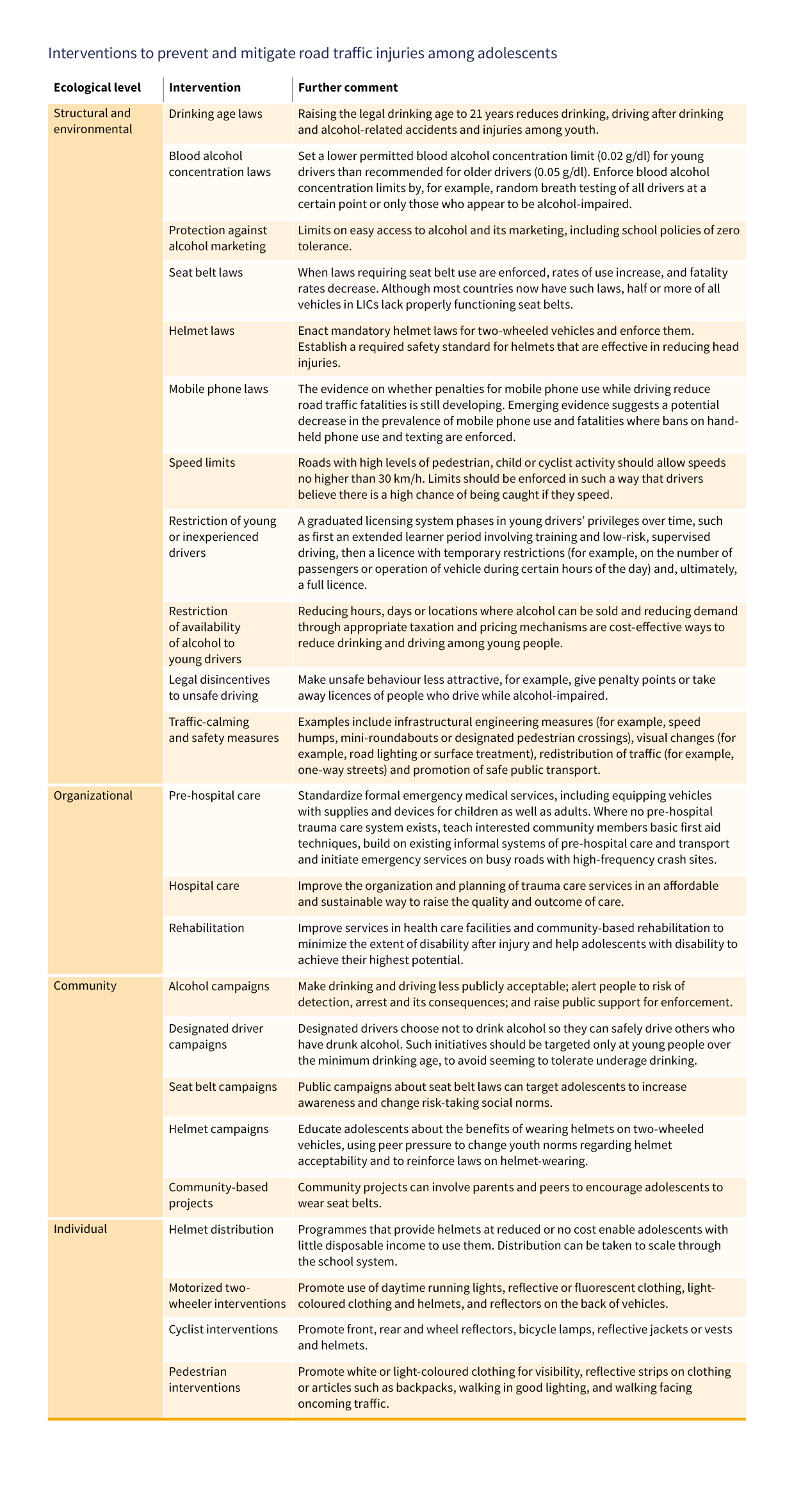
Road traffic injury
While road traffic injury is a leading cause of adolescent death across the globe, the interventions most likely to reduce it may differ greatly, depending on the setting. For example, in countries where the main adolescent victims of road traffic accidents are adolescent drivers and their passengers, adolescent-specific interventions – for example, low blood alcohol limits, limiting the availability of alcohol and other restrictions on young drivers – may be the most effective interventions to reduce the adolescent burden.
However, in countries where few adolescents are drivers, but the rates of road traffic injury among adolescent pedestrians, cyclists and public transport passengers are very high, better implementation of population-level interventions may be more effective – for example, legal disincentives to driving unsafely and lower speed limits. Such situations are most likely in middle-income countries and especially LICs, where road traffic injuries and deaths largely involve vulnerable road users, that is, motorcyclists, pedestrians and cyclists. In practice, a mix of interventions of both types, tailored to the specific setting, is likely to maximize impact.

Drowning
Adolescent drowning can be prevented through strategies targeting the general population as well as communities at risk. Many of these have been successfully implemented in low-income settings and settings that are prone to flood risks.
The table below shows the interventions to prevent drowning (click on the table to enlarge).


Burns
Burns are one the few forms of injury that have a higher burden in adolescent females than males. This is because worldwide approximately 2 billion people in LMICs – the vast majority female – cook on unsafe fires or very basic traditional stoves in their own homes or as domestic workers. Due to their youth, young women are, on average, less skilful and so more prone to burns than adult women.
Burns are preventable. HICs have made considerable progress in lowering rates of burn deaths, using a combination of prevention strategies and improvements in the care of people with burns. Most of these advances in prevention and care have been incompletely applied in LMICs. Increased efforts to do so would likely lead to significant reductions in burn-related death and disability.
Prevention strategies should address the hazards for specific burn injuries, education for vulnerable populations and training of communities in first aid. An effective burn prevention plan should be multisectoral and include broad efforts to:
- improve awareness
- develop and enforce effective policy
- describe the burden and identify risk factors
- set research priorities, giving highest priority to the most promising interventions
- implement burn prevention programmes
- strengthen burn care
- strengthen capacities to carry out all of the above.
Careful assessment of the cause of adolescent injury is also important; some adolescents or their guardians may falsely state that an injury was due to an accident when in fact it was due to self-harm or interpersonal violence. In some countries, for example, so-called honour killings and death by fire account for a significant number of reported cases of familial or intimate partner violence against adolescent girls, and survivors of such assaults may be compelled by the perpetrators to claim that the injuries were accidental. Similarly, alcohol/drug use is a major risk factor for many forms of injury, both when an adolescent is the drinker and when the drinker (for example, a parent or an intimate partner) causes harm to an adolescent. In these instances, additional interventions related to mental health and substance use disorder and/or legal interventions may be warranted.



